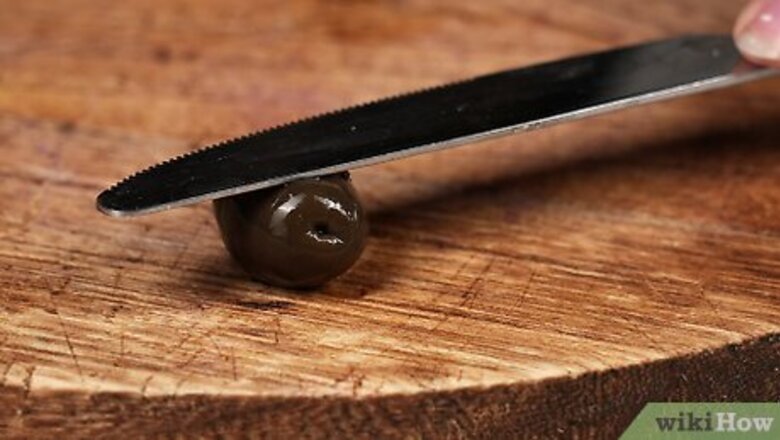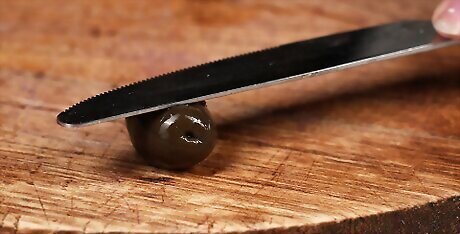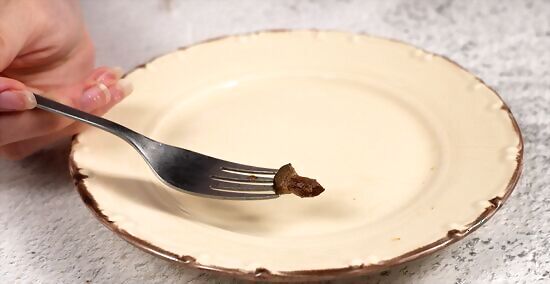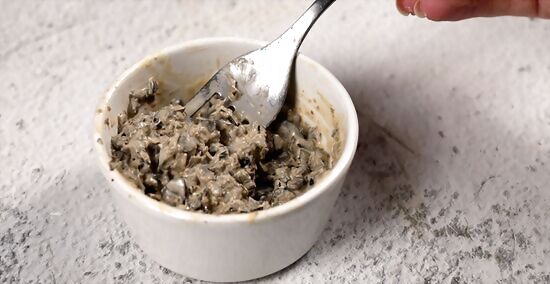
views
Eating Olives with Pits

Smash the olive with the flat side of a knife if you’re at home. Similar to crushing a clove of garlic, set your olive on a cutting board and use the flat side of a broad knife to smash the olive until you feel the pit resisting the knife. Then simply use your fingers to pull the pit away from the meat of the olive. Discard the pit and enjoy the olive. If you’re out at a restaurant or party, avoid this trick as the oils might squirt onto someone nearby, or the olive might go flying if you smash it at a weird angle.

Eat around the pit of the olive if you’re at a party or restaurant. Even if the olive is large and it seems like it might be easier to bite into it and remove the pit before eating the rest of it, resist doing so. Instead, put the entire olive into your mouth and chew around the pit. Etiquette coaches discourage nibbling on olives.

Push the pit between the tines of your fork if you have one. After you’ve chewed around the pit, put the tip of your fork into your mouth and use your tongue to push the pit between the tines. Remove the fork from your mouth and place the pit on the side of your plate. Putting the pit between the tines keeps it secure while you’re taking it out of your mouth. Simply resting the pit on top of the tines could be problematic because the pit could easily fall off of the fork.

Take the pit from your mouth with your fingers if you don’t have a fork. Either pluck the pit from your mouth with your thumb and forefinger, or cover your mouth with one hand and remove the pit discreetly. Avoid spitting your pit directly into a cocktail napkin or your hand—there is a good chance that the pit might go bouncing somewhere it shouldn’t be. After you’ve finished snacking, it’s a good idea to wash your hands before touching anything else.

Place the pit in a cocktail napkin, on your plate, or in a pit bowl. Regardless of the method you used to remove the pit, make sure it ends up in an appropriate place. Avoid holding pits in your hand or dropping them on the floor. If you’re at a party and there isn’t a pit bowl, forks, or napkins, look around to see what others are doing with their disposables, like olive pits and toothpicks, and follow their lead.
Trying Different Kinds of Olives

Pick deep-purple kalamata olives for a salty, vinegar-heavy option. Kalamata olives are usually preserved in vinegar and oil, which is what gives them their bitter, biting taste. They’re often used in different dips and in mediterranean dishes, like couscous and hummus. Kalamata olives are also almost always served with the traditional Greek salad.

Try mission olives for a black, oil-cured olive with a mild taste. The mission olives are the ones that you often see as a pizza topping. The flavor is milder than that of most other olives. Compare it next to some other varieties to see which one is your favorite. Mission olives usually come from California and much of the yield from harvests goes into making your everyday olive oil.

Choose the manzanilla for a green olive usually stuffed with pimentos. These green olives are generally very bitter with a slightly smoky flavor, so the pimento (a type of sweet, red pepper) is added to curb that bitterness. Manzanilla olives stuffed with pimentos are often used to make tapenade. The manzanilla comes from Spain and is cured with brine rather than oil.

Enjoy the Cerignola olive, which is large, crisp, and buttery. These are large olives that are either green or black, and they’re often used as a stand-alone component on a cheese board. They pair well with strong flavors, like garlic, capers, anchovies, and cheeses. You could try the cerignola on its own and then pair it with other garnishes to see how the flavor profile changes when other ingredients are introduced.

Select the nicoise olive if you like hints of licorice. These are smaller olives with a purple tint to their skin. They are more sour in flavor and are often used to complement salads or tapenade. Along with the hint of licorice, the nicoise olive is more herbal in flavor than other olives. The nicoise olive is often used in French cuisine.
Using Olives with Other Dishes

Top a salad, sandwich, or pizza with olives for a tasty garnish. Buy canned, pre-sliced olives from the grocery store, or purchase jarred or fresh olives and cut them up into quarters or slices yourself. Olives add a nice, salty flavor to salads, sandwiches, and other foods.

Make hummus with olives to complement the tahini and chickpeas. Either puree olives along with the rest of the hummus ingredients, or add them to the top of a bowl of homemade or store-bought hummus. Slice up several different kinds of olives for a colorful addition to your snack. Try drizzling a little bit of olive oil overtop of your hummus and olives, too, for an additional boost of flavor.

Bake bread to enjoy to flavor of olives within a freshly baked loaf. Search online for “Mediterranean black olive bread” to access different variations of a very popular loaf. Use as few as 5 ingredients (yeast, water, salt, bread flour, and olives), or add in garlic or different herbs and cheeses. Olives go great with fragrant herbs, spicy garlic, creamy cheeses, and warm bread. Even if you don’t incorporate olives directly into the bread, you could make a tapenade to spread over top of a freshly baked loaf.

Roast your olives on their own or with a protein for a decadent dish. Use a variety of olives, sliced lemons, whole garlic cloves, and fresh herbs, like thyme and rosemary, to create a delicious accompaniment to any meal. In general, you’ll bake the olives in a roasting pan at 400 °F (204 °C) for about 20 minutes, but check your recipe for specifics. Serve your roasted olives with crusty bread, as a side to a pasta dish, or with fish. Olives are so versatile—they can be paired with a lot of other ingredients!

Make a delicious dirty martini using olives as a garnish. Add 2 jiggers of vodka, 1/2 a jigger of vermouth, and 1/2 a jigger of olive brine to a cocktail shaker filled with ice. Shake it until the liquids are chilled, and then pour the drink into a cocktail glass. Add several olives to the glass as a garnish. You can add the olives to the bottom of the glass, or put them on a skewer to make them easier to eat.














Comments
0 comment